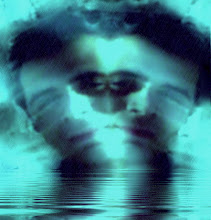Waht are Myths? A vital factor in our development has been the use of symbols to represent ideas and urges. Symbols magically bring ideas to life, offering multiple layers of meaning.For example, when Theseus tracks down the Minotaur in the Cretan labyrinth, he lays down a thread to guide his return. This may symbolize divine inspiration, or the link between the conscious and the unconscious. The labyrinth itself can be seen as a symbol of the individual’s tortuous journey to self-knowledge, and of feminine mysteries.
0-1-Myths interpreted

Mythology has been used by poets, playwrights and artists for centuries. The nineteenth century, however, saw the rise of scientific rationalism, and social realism in the arts. Myths were in danger of being demoted to the status of antiquated tales about non-existent gods. With the rise of psychology, myths found a new status. Freud saw them as expressing repressed impulses commonly found in the personal unconscious. For example the myth of Oedipus expressed a boy’s socially unacceptable desire to kill his father and sleep with his mother. Claude Levi-Strauss, a structuralist anthropologist, saw myths as stemming from a human need to make sense of the world and to resolve cultural dilemmas. These dilemmas are embodied in the structure of myths, which is made up of opposites, such as good-bad, night-day. For Levi-Strauss, myths are a kind of universal language. While the events of myths vary, the basic structures, like grammar, are similar in myths worldwide - because people are similar.On another level of 'making sense', myths explain the world, making it manageable. For example, the myths worldwide in which human beings are fashioned from clay by a divine potter, such as the Egyptian Ptah, fulfil our need to know how and why we came to be here. Other widespread myths explain death and the seasons.
0-2-Myths as magic
 Another view focuses on myth as magic. Stories of hero gods descending into the Underworld in the west, and emerging in the east, reflect the setting and rising of the sun. Myths in which an ageing goddess is reborn as a youthful virgin reflect the return of spring after winter.This kind of myth must have reassured early man. More important, it is likely that the repeated telling of stories symbolizing the rising of the sun, the return of spring, or the ripening of crops was a magical way of making these things happen.
Another view focuses on myth as magic. Stories of hero gods descending into the Underworld in the west, and emerging in the east, reflect the setting and rising of the sun. Myths in which an ageing goddess is reborn as a youthful virgin reflect the return of spring after winter.This kind of myth must have reassured early man. More important, it is likely that the repeated telling of stories symbolizing the rising of the sun, the return of spring, or the ripening of crops was a magical way of making these things happen. 0-3-Myths worldwide
Many commentators have noted the similarities between myths in different cultures. One theory is that this can be explained by migration, trade contact, and the exchange of myths between conquerors and conquered. There is certainly some truth in this, for example in the interweaving of Aztec and Mayan myths. However, this can hardly explain similarities such as the appearance of ‘Trickster’ gods: the infant Hermes stealing Apollo’s cattle, the Norse Loki cutting off the golden tresses of Thor’s wife Sif, or a similarly mischievous deity of the North American Winnebago Indians.
0-4-Jung's archetypes
The exploration of myths found a new dimension in the work of Carl Jung. Whereas Freud saw the unconscious as being entirely personal, the product of a lifetime’s repressed sexual urges, Jung identified a layer of consciousness below this – the collective unconscious. This is a vast psychic pool of energized symbols shared by humanity as a whole. It is filled with ‘archetypes’: symbolic figures, such as the Trickster mentioned above, the Mother, and the Father. These figures also represent the animus and anima: the undeveloped and largely unacknowledged opposite-sex parts of, respectively, the female and male psyche. Another important archetype is the Shadow, which embodies all that we deny in ourselves and ‘project’ onto people we dislike. These archetypes form the dramatis personae of myth. Thus myths offer a way for cultures to explore their collective impulses, and to express them creatively, rather than harmfully.
0-5-Myths, dreams and the individual
Jung recognized dreams as doorways between an individual and the collective unconscious. Many dreams, he said, expressed archetypes that might otherwise be projected onto the waking world as irrational fears, delusions or hatreds. Joseph Campbell, who has developed this idea, writes:

Here we can begin to see a way of working with myths on a personal level, for our own development.
Campbell and other writers have also pointed out that myths are still emerging and developing in the present day. On the social level we see this in the recurrence of mythical archetypes in popular culture, for example in the Star Wars films.
.jpg)



هیچ نظری موجود نیست:
ارسال یک نظر